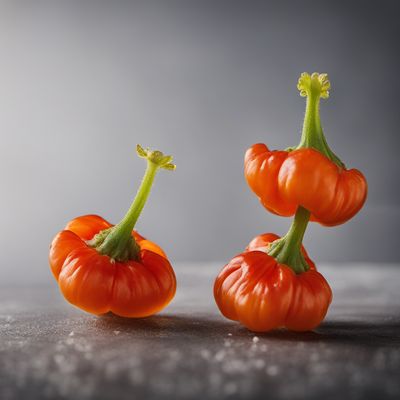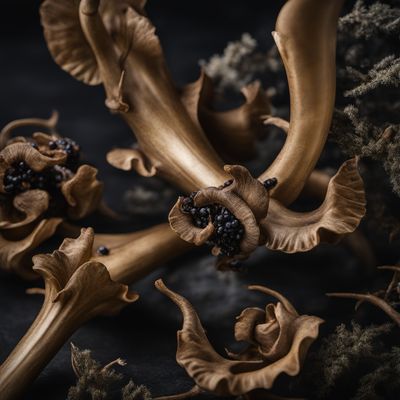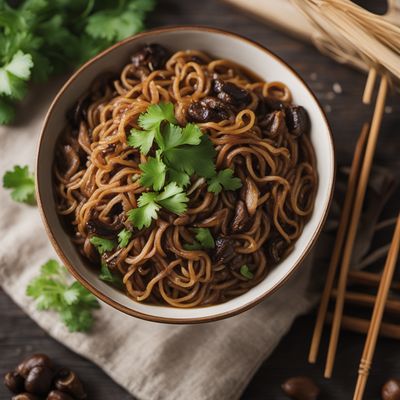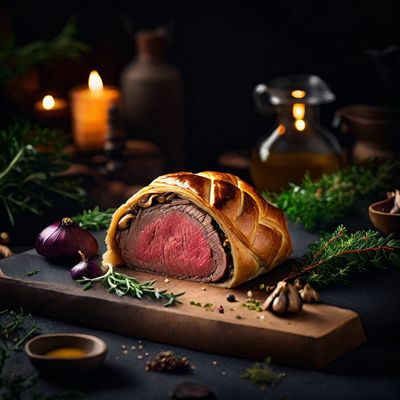
Ingredient
Chanterelles
Golden Delicacy
Chanterelles have a fruity and earthy flavor with a hint of pepper. They have a firm yet tender texture and a vibrant golden color that adds visual appeal to any dish. These mushrooms are versatile and can be used in various culinary applications, from sautéing and roasting to soups and sauces.
Origins and history
Chanterelles have a rich culinary history and are highly regarded in European cuisine, particularly in France and Italy. They have been foraged and enjoyed for centuries, and their popularity continues to grow due to their unique flavor and texture.
Nutritional information
Chanterelles are low in calories and fat, making them a healthy addition to meals. They are also a good source of vitamins, minerals, and antioxidants, including vitamin D, potassium, and selenium.
Allergens
Chanterelles may cause allergic reactions in some individuals, particularly those with mushroom allergies. It is recommended to consume them in moderation and consult a healthcare professional if you have any concerns.
How to select
When selecting chanterelles, look for mushrooms that are firm, plump, and free from blemishes or signs of decay. They should have a vibrant golden color and a pleasant, earthy aroma. Avoid mushrooms that are slimy or have a strong, unpleasant odor.
Storage recommendations
To extend the shelf life of chanterelles, store them in a paper bag or a loosely closed container in the refrigerator. Avoid washing them until ready to use, as excess moisture can cause them to spoil faster. Fresh chanterelles can be stored for up to a week.
How to produce
Chanterelles can be cultivated by creating a suitable environment that mimics their natural habitat. However, they are primarily foraged from the wild due to their specific growth requirements and symbiotic relationship with certain tree species.
Preparation tips
Before using chanterelles, gently clean them with a soft brush or a damp cloth to remove any dirt or debris. They can be sautéed, roasted, or used in soups, sauces, and risottos to enhance their flavor. Avoid overcooking, as it can result in a loss of their delicate texture and flavor.
Substitutions
If chanterelles are not available, you can use other wild mushrooms like porcini or morel as substitutes. However, keep in mind that the flavor and texture may differ slightly.
Culinary uses
Chanterelles are commonly used in dishes like pasta with mushroom sauce, creamy soups, and risottos. They pair well with ingredients like garlic, butter, thyme, and cream. They are also a popular choice for garnishing and adding visual appeal to dishes.
Availability
Chanterelles are commonly found in Europe, particularly in countries like France, Italy, and Sweden. They can also be found in North America, particularly in the Pacific Northwest region of the United States and Canada.
More ingredients from this category

Scotch bonnet mushrooms
Fiery Delights: Unleashing the Flavors of Scotch Bonnet Mushrooms

Horns of plenty
Exploring the Delights of Horns of Plenty

Ceps
The King of Mushrooms

Other wild fungi
Exploring the Hidden World of Wild Mushrooms

Hedgehog mushrooms
Exquisite Earthiness: Hedgehog Mushrooms

Gypsy mushroom
The Enigmatic Delicacy: Gypsy Mushroom

Morels
The Earthy Delicacy

Saint George's mushrooms
The Forest Delicacy

Saffron milk cap
The Golden Delicacy: Unveiling the Secrets of Saffron Milk Cap

Honey mushroom
The Golden Fungus

Truffles
The Earth's Edible Gems
Recipes using Chanterelles

Latvian-style Mushroom Risotto
Forest Delight: Latvian Mushroom Risotto

Hungarian-style Mushroom Risotto
Magical Mushroom Risotto: A Hungarian Twist on Italian Comfort

French-inspired English Breakfast
Petit Déjeuner Anglais à la Française

Tlingit-inspired Nameko Soba
Wild Mushroom Soba Delight

Beef Wellington
Nordic-inspired Beef Wellington with Root Vegetable Purée